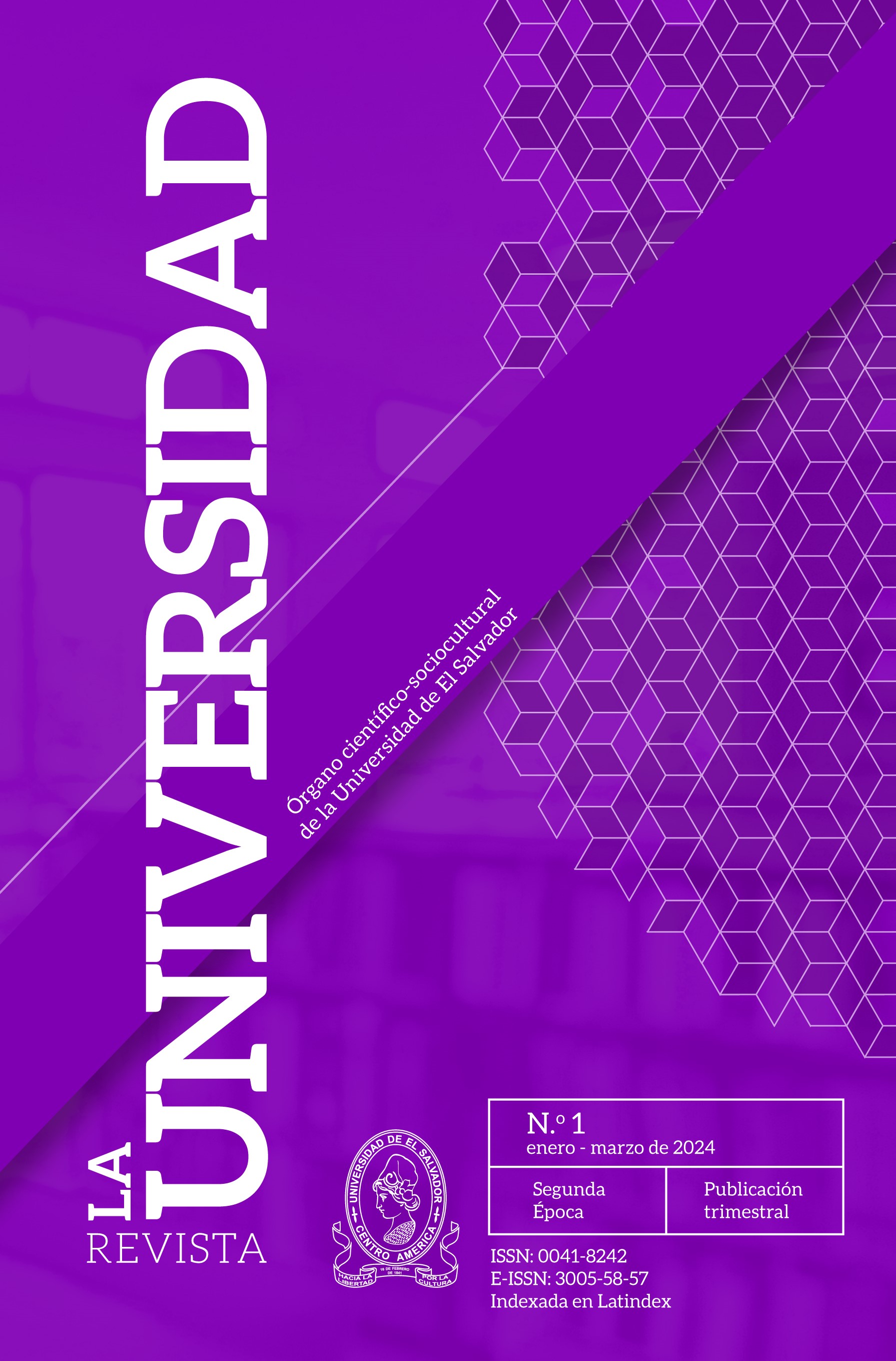Novel and subalternities in El Salvador
study of the work Cenizas de Izalco (1997) by Claribel Alegría
Keywords:
salvadoran novel, subalternities, subaltern subject, hegemony, resistanceAbstract
The objective of this work is to analize the phenomenon of subalternity reflected in a 20th century Salvadoran novel and to identify the contextual factors that explain this phenomenon from fictional fiction. Regarding the method, the study of the novel Cenizas de Izalco (1997) by Claribel Alegría was carried out from the theoretical perspective of subalternity, one of the most significant postcolonial theories within sociocultural and literary history. After interpreting the results, it is concluded that the author through her characters represents in different ways the phenomenon of subalternity. Firstly, it exhibits the harsh reality of the peasants and indigenous people of El Salvador at the time of 1932. Then the female subalternity is evidenced both in the public sphere (social-political) and in the privare sphere (marriage) and finally, subaltern relations in the military sphere are notorious. Regarding the contextual factors that explain subalternity in the novel, it was found that the main factors are political social, economic, religious, moral, among others, such as: the capitalist system, social and economic inequality, the militarism (“Martinato”), the political regime, the patriarcal system, ideological apparatus, among others. Likewise, it is considered that the author through her work implicity proposes a model for the conquest of female freedom and provides alternatives so that women can reconfigure themselves through sexual and political awareness.
Downloads
References
Referencias
Alegría, C. (1997). Cenizas de Izalco (4 ed.). CONCULTURA.
Araya Solano, S. (1992). El exámen ético de la historia en Cenizas de Izalco, de Claribel Alegría y Darwin J. Flakoll. Letras, 25-26. Obtenido de https://dialnet.unirioja.es/descarga/articulo/5476204.pdf
Bautista Hernández, L. (2015). El silencio tiene nombre de mujer: cuentos sobre subalternidad femenina. [Tesis para optar al grado de licenciatura en creación literaria, Universidad Autónoma de México]. Obtenido de https://repositorioinstitucionaluacm.mx/jspui/bitstream/123456789/646/3/laura%20bautista%20hernandez.pdf
Bettaglio Condon, B. (2009). Narrativas e imágenes de la revolución y de la memoria: Cenizas de Izalco y la exposición Inside El Salvador. [Tesis para optar al grado de licenciatura,Universidad de El Salvador]. Obtenido de https://scholarship.rice.edu/handle/1911/103675
Callister, R. (2018). El juego derribado: la exploración de opciones culturales en Las Cenizas de Izalco de Claribel Alegría. Revista
latinoamericana de ensayo (25), 1-10. Obtenido de https://critica.cl/literatura/el-juego-derribado-la-exploracion-deopciones-culturales-en-las-cenizas-de-izalco-de-claribelalegria
Cruz Cruz, García Pérez & Santos Morán. (2008). Aplicación del método socioloógico literario para el análisis de la obra «Cenizas de Izalco». [Tesis para optar al grado de licenciatura en Ciencias de la Educación Especialidad Lenguaje y Literatura, Universidad Pedagógica de El Salvador]. Obtenido de https://issuu.com/bibliotecapedagogica/docs/aplicaci__n_del_m__todo_sociol__gic
Espeleta Olivera, M. (2015). Subalternidades femeninas: la autorrepresentación como resistencia. [Tesis para obtener el
grado de doctorado en Ciudadanía y Derechos Humanos,Universidad de Barcelona]. Obtenido de https://tesisenred.net/handle/10803/316773
Guha, R. (2002). Las voces de la historia y otros estudios subalternos. Barcelona, España: Crítica. Obtenido de http://www.ceapedi.
com.ar/imagenes/biblioteca/libreria/318.pdf
Martín Hernández, I. (2014). El trauma de 1932 en la narrativa de El Salvador. [Tesis para optar al grado de doctor, Universidad Complutense de Madrid]. Obtenido de https://ri.ues.edu.sv/id/eprint/24832/1/ESTUDIO%20DE%20LA%20NARRATIVA%20DE%20MARIO%20BENCASTRO%20
pdf.pdf
Melgar Murcia, E. (2011). Proceso de concientización de los personajes femeninos de la novela Cenizas de Izalco fr la escritora Claribel Alegría. [Tesis para optar al grado de licenciatura en Letras, Universidad de El Salvador]. Obtenido de https://ri.ues.edu.sv/2200/
Miklos, A. (2014). Lo erótico y el diario íntimo en Cenizas de Izalco. Obtenido de https://www.academia.edu/12014199/Derechos_pospuestos_Lo_er%C3%B3tico_y_el_diario_%C3%ADntimo_en_Cenizas_de_Izalco
Modonessi, M. (2012). Subalternidad. Obtenido de https://conceptos.sociales.unam.mx/conceptos_final/497trabajo.pdf
Oviedo Silva, D. (2006). Subalternidad e Informacionalismo:proyeccione en teoría de la historia desde dociedades periféricas. Invierno HAOL(9), 181-191. Obtenido de https://historia-actual.org/Publicaciones/index.php/hao/article/view/144
Uscátegui Narváez, A. (2014). La subalternidad en la novela Eclipse de luna. Revista científica Guillermo de Ockham, 2(12), 11-116. Obtenido de https://dialnet.unirioja.es/descarga/articulo/6456370.pdf
Vilá de Lara, A. (2015). Claribel Alegría: mujer que se compromete. Cenizas de Izalco: obra que delata. Revista de museología koot, 5(6), 45-61. Obtenido de https://www.camjol.info/index.php/KOOT/article/view/2292/2073
Downloads
Published
Issue
Section
License
Copyright (c) 2024 Authors who publish in Revista La Universidad agree to the following terms: Authors continue as owners of their works, non-exclusively assigning dissemination rights to La Universidad Journal under the standards of the Attribution-NonCommercial-ShareAlike License: CC BY-NC-SA 4.0. This license allows the use of a work to create another work or content, modifying or not the original work, as long as the author is cited, the resulting work is shared under the same type of license and has no commercial purposes(https://creativecommons.org/licenses/by-nc-sa/4.0/deed.es).

This work is licensed under a Creative Commons Attribution-NonCommercial-ShareAlike 4.0 International License.





